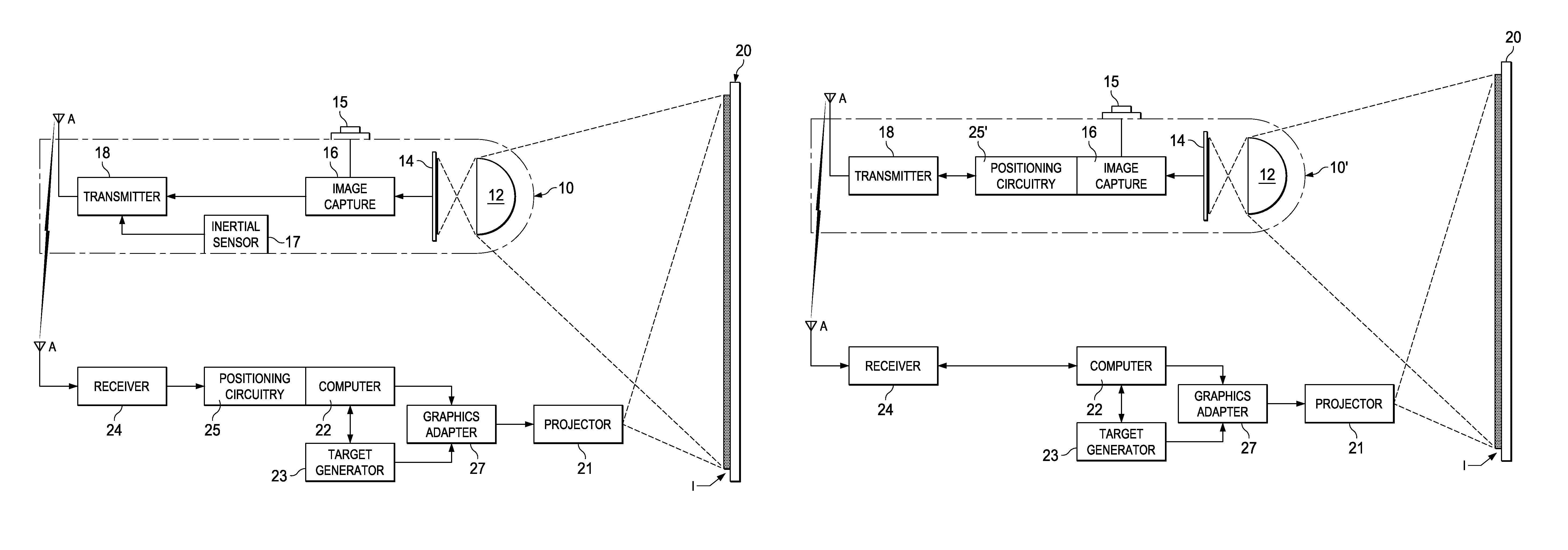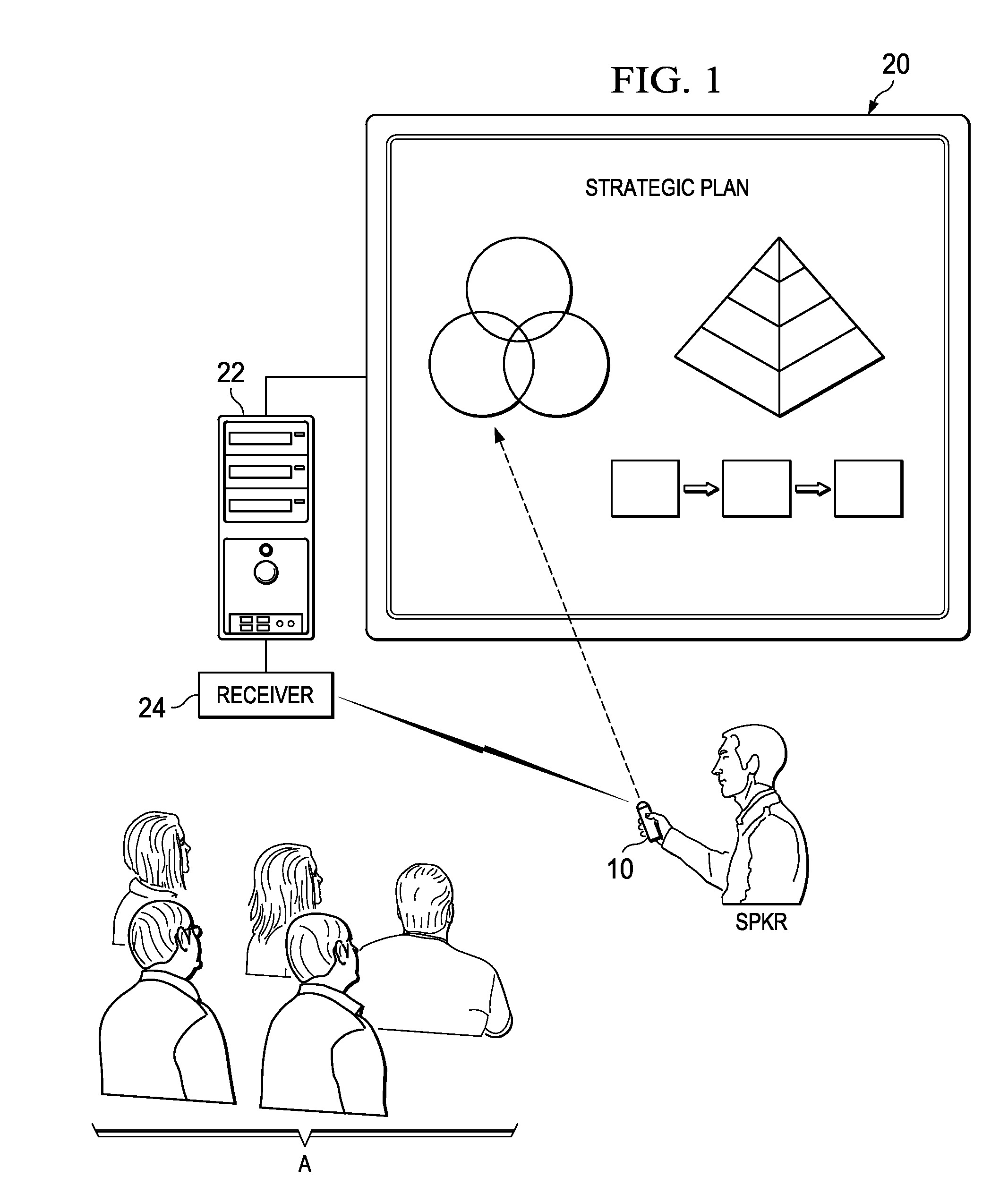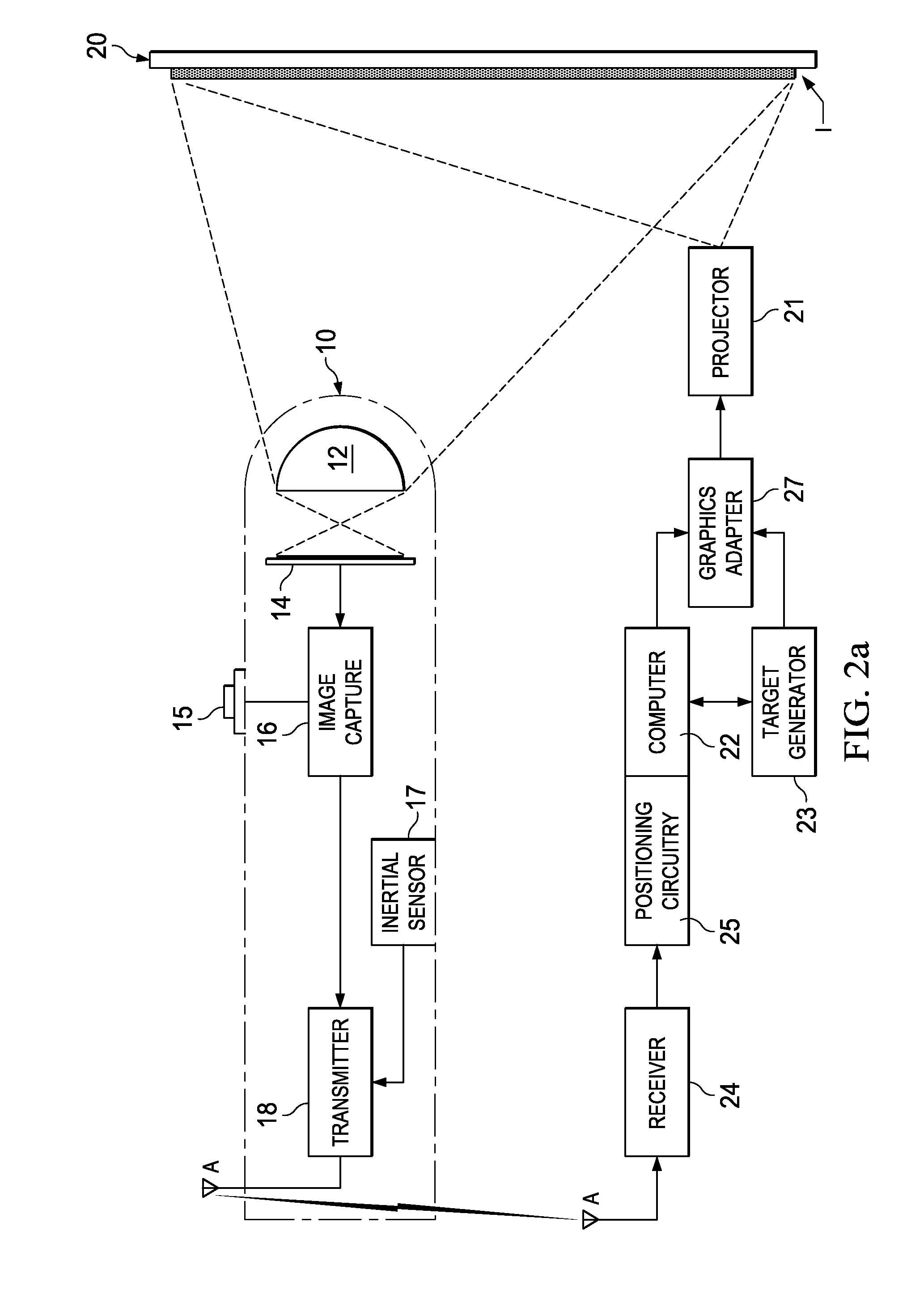Interactive display system
a display system and interactive technology, applied in the field of interactive display systems, can solve the problems of limited light pen sensing technology, limited presentation, and limited speech speaker to visual information contained within the presentation, and achieve the effect of reducing human perceptibility
- Summary
- Abstract
- Description
- Claims
- Application Information
AI Technical Summary
Benefits of technology
Problems solved by technology
Method used
Image
Examples
Embodiment Construction
[0051]The present invention will be described in connection with one or more of its embodiments, namely as implemented into a computerized presentation system including a display visible by an audience, as it is contemplated that this invention will be particularly beneficial when applied to such a system. However, it is also contemplated that this invention can be useful in connection with other applications, such as in gaming systems, general input by a user into a computer system, and the like. Accordingly, it is to be understood that the following description is provided by way of example only, and is not intended to limit the true scope of this invention as claimed.
[0052]FIG. 1 illustrates a simplified example of an environment in which embodiments of this invention are useful. As shown in FIG. 1, speaker SPKR is giving a live presentation to audience A, with the use of visual aids. In this case, the visual aids are in the form of computer graphics and text, generated by comput...
PUM
 Login to View More
Login to View More Abstract
Description
Claims
Application Information
 Login to View More
Login to View More - R&D
- Intellectual Property
- Life Sciences
- Materials
- Tech Scout
- Unparalleled Data Quality
- Higher Quality Content
- 60% Fewer Hallucinations
Browse by: Latest US Patents, China's latest patents, Technical Efficacy Thesaurus, Application Domain, Technology Topic, Popular Technical Reports.
© 2025 PatSnap. All rights reserved.Legal|Privacy policy|Modern Slavery Act Transparency Statement|Sitemap|About US| Contact US: help@patsnap.com



